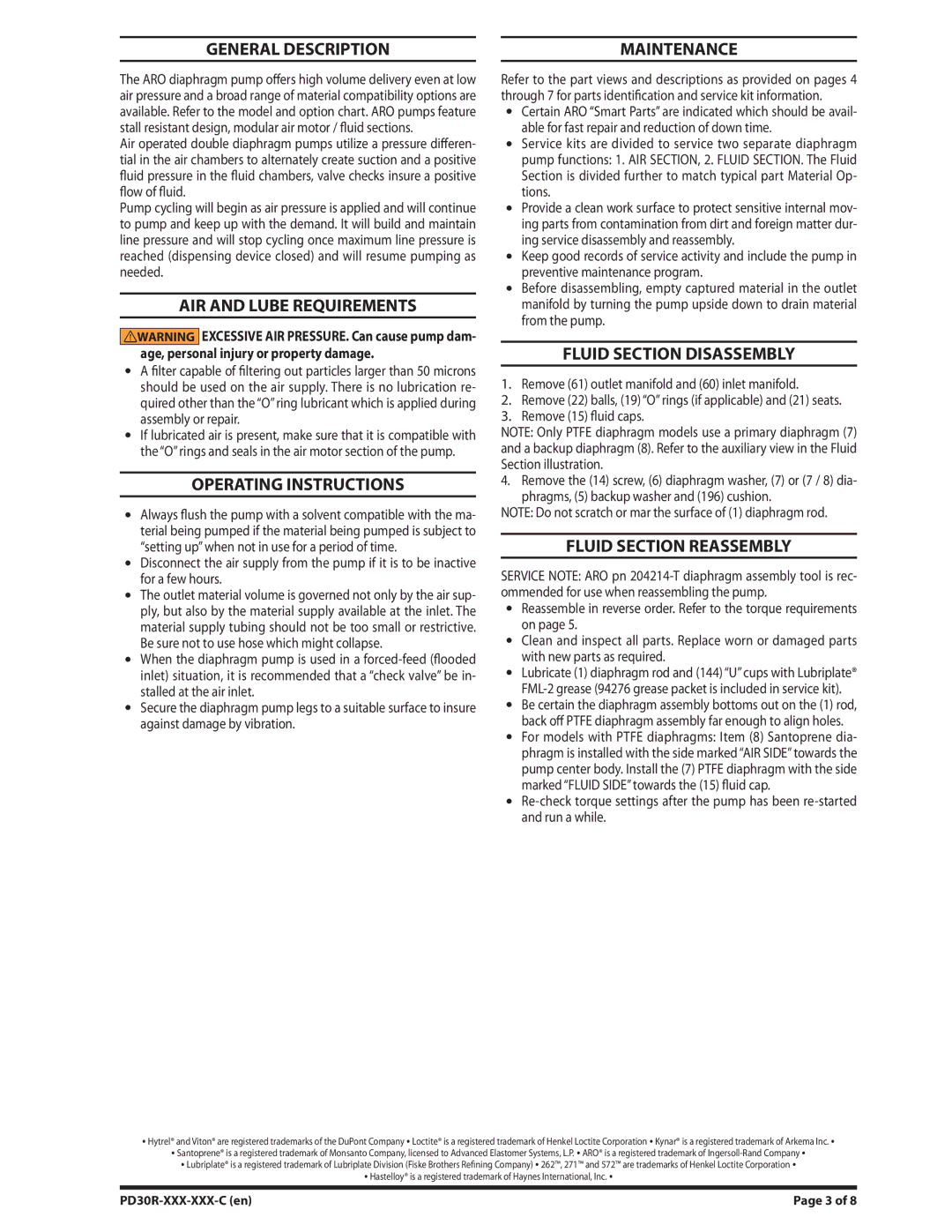PD30R-XXX-XXX-C specifications
The Ingersoll-Rand PD30R-XXX-XXX-C is a robust and reliable rotary screw air compressor designed to meet the demanding needs of various industrial applications. Renowned for its efficiency and performance, this model is part of Ingersoll-Rand’s extensive range of air compressors, known for their innovative technologies and exceptional build quality.One of the standout features of the PD30R-XXX-XXX-C is its impressive efficiency. Equipped with advanced rotary screw technology, it operates quietly while delivering a consistent and high-quality air supply. The compressor is designed to minimize energy consumption, making it an environmentally friendly option that also reduces operational costs. This focus on energy efficiency is complemented by integrated control systems that monitor performance and optimize energy usage in real time.
Durability is another key characteristic of the PD30R-XXX-XXX-C. Constructed using high-quality materials, the compressor is engineered to withstand harsh working conditions. Its robust design ensures a long operational life, reducing the frequency of maintenance and downtime. The compressor also features an advanced cooling system that prevents overheating, ensuring uninterrupted operation even during prolonged use.
Technologically, the PD30R-XXX-XXX-C comes with user-friendly digital controls that provide operators with easy access to vital compressor information. These controls allow for precise regulation of air pressure and flow, ensuring that the compressor can be tailored to meet specific application requirements. Additionally, the unit is equipped with smart diagnostics that help identify potential issues before they escalate, further enhancing reliability and performance.
Another significant feature of the PD30R-XXX-XXX-C is its compact design. This makes it suitable for facilities with limited space while still providing powerful air delivery. Its modular design allows for flexibility in installation and integration into existing systems.
Overall, the Ingersoll-Rand PD30R-XXX-XXX-C stands out as a top-tier air compressor that combines efficiency, durability, and advanced technology. It is designed to meet the rigorous demands of industrial applications, providing a reliable source of compressed air that helps businesses improve productivity and reduce operational costs. For those looking for a high-performance solution in air compression, the PD30R-XXX-XXX-C is an excellent choice.

